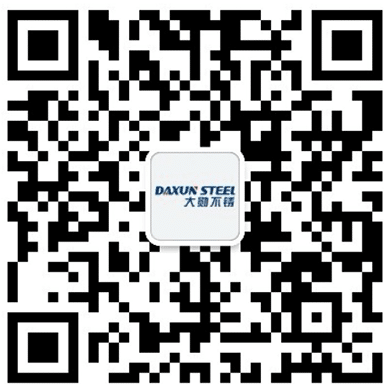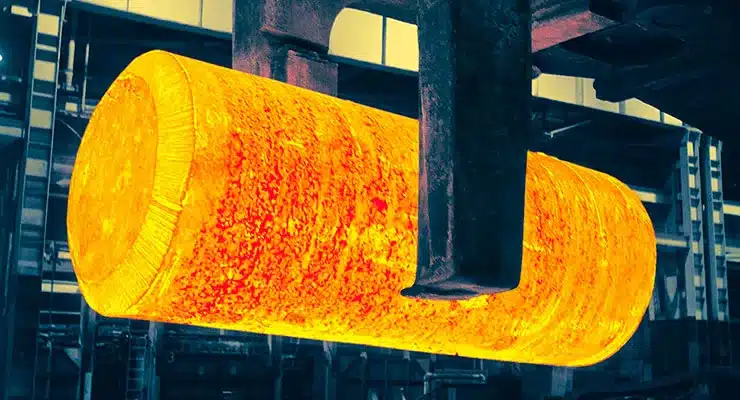Curious about stainless steel imports? Discover market trends, major players, and the impact of global tariffs and trade policies. Learn how anti-dumping duties and evolving regulations shape the industry. Stay ahead with insights into the future of stainless steel imports.
Key Takeaways
- The global stainless steel market is projected to grow to approximately USD 179.6 billion by 2032, with Asia-Pacific leading in production and import activities.
- Tariffs and trade policies significantly influence the stainless steel import landscape, with the U.S. implementing a 25% tariff under Section 232 and the EU maintaining protective measures against imports.
- The rise of green steel initiatives highlights the industry’s shift towards sustainability, presenting new opportunities for importers amid evolving trade dynamics.
Global Overview of Stainless Steel Import
The worldwide market for stainless steel is anticipated to expand from an estimated USD 130.6 billion in 2023 to around USD 179.6 billion by the year 2032, displaying a compound annual growth rate of roughly 4.6%. Stainless steel’s inherent features, such as its chromium-induced corrosion resistance, render it essential across numerous industries, fueling demand for products made from this material.
Projected to spearhead the stainless steel industry is the Asia-Pacific region with significant contributions emanating from nations like China, Japan and India. These countries boast substantial production capabilities and are pivotal players within the global realm of steel imports. Dominant forces including Acerinox, Thyssen Krupp and Outokumpu shape the competitive environment through continual innovation aimed at satisfying evolving demands while economic uncertainties along with political shifts in Europe and America pose potential impacts on their trade involving stainless steel imports.
In particular, Germany’s forecasted slow growth might dampen both demand for stainless-steel goods as well as import activity within Europe. Meanwhile, unpredictable nickel pricing due largely to Indonesia prioritizing local refinement operations coupled with prospective governmental actions by China complicates these markets dynamics.
Challenges notwithstanding, there is anticipation that stability will resume around 2025 hence offering a comparatively solid prognosis beneficial not just for those involved in importing but all related stakeholders amidst ever-changing landscapes.
Tariffs and Trade Policies Impacting Stainless Steel Imports
Trade policies and tariffs significantly influence the importation landscape of stainless steel products. A notable instance is when a 25% tariff on steel imports was put into effect by the U.S. in March 2018, as per Section 232’s provisions related to national security threats. This action brought substantial price increases for imported steel goods from primary trade partners like Mexico and Canada, with added costs potentially reaching $2.1 billion. These tariffs have far-reaching effects that disrupt international commerce flows and necessitate alterations in worldwide trade regulations.
On May 1, 2023, adjustments were made by the U.S. Department of Commerce concerning how they administer tariff-rate quotas applicable to steel mill imports originating from countries such as Japan, the EU, and the UK. Exemptions can be provided for those categories of imported steel not readily available within domestic production. These are contingent upon thorough exclusion requests being submitted with precise information regarding both chemical makeup and dimensions of these products under scrutiny—a process overseen rigorously by Customs and Border Protection ensuring conformity with rules.
The potential implementation of restrictive measures on trade by the European Union could also affect how Asian markets relate to stainless-steel industry transactions within America—underscoring this point is recent evidence presented by The Department of Commerce indicating certain Indian-exported stainless steels were priced below their standard value—an issue accentuating ongoing complexities confronting stakeholders dealing with importing stainless steel commodities.
It remains essential for players involved or invested in import operations tied to diverse kinds—including those related directly back to mills producing said items—to stay current amidst continually shifting paradigms governing global market interactions encompassing all things associated directly or indirectly with steeled materials moving through commercial exchanges internationally.
Anti-Dumping Duties on Stainless Steel Products
The implementation of anti-dumping duties is vital in defending native steel industries against unjust competitive pressures, influencing the influx of steel imports. The U.S. Department of Commerce has resolved to extend its anti-dumping duty mandate on India-originated stainless steel bars, recognizing the adverse effects that dumping can have on domestic sectors. This action emphasizes the significance of preserving the homegrown stainless steel industry from potential damage.
Set to persist as of September 10, 2024, these duties mirror a commitment to promoting equitable commerce internationally. Mirroring this stance are other nations who’ve also adopted countermeasures against dumping. For example, India has enacted varying anti-dumping tariffs ranging from 4.58% to 57.39% on select Chinese-made stainless steel products while both Australia and Mexico have instituted comparable defenses for their own markets against low-cost imported goods.
The reinforcement through such tariffs underscores an intricate balance within international trade protocols and local industry safeguarding strategies. These impositions serve as strategic moves by countries seeking equilibrium for their internal producers amidst global commercial intricacies—knowledge essential for importers and interested parties aiming at astute participation in the broader realm of stainless and other steel product trades.
Country-Specific Tariffs on Stainless Steel Imports
Tariff rates on stainless steel import are determined by the strategic imperatives and trade affiliations of individual countries. The United States, responding to national security worries under Section 232, has put in place a 25% tariff on these imports. Nations like Canada and Mexico have managed to secure exemptions due to diplomatic intricacies that affect how tariffs are enforced.
To safeguard its own steel industry from global competitors such as China and Indonesia, the European Union enforces both tariffs and quotas on imported steel. These measures aim at creating an equitable competitive environment while bolstering domestic production capacities.
Diverse economies including Brazil, Japan, and Russia enforce their unique sets of tariffs for importing stainless steel, which varies according to the type of product being brought in as well as its country of origin. South Korea’s imposition of duties also fluctuates based on existing trade agreements coupled with specificities regarding products involved.
Such variations highlight the intricate nature inherent within international markets for stainless steel imports where each nation’s policies directly sway trading patterns. It is crucial for importers operating within this multifaceted domain to grasp these distinctive country-centered duties so they can formulate effective strategies ensuring prudent fiscal management amidst stiff competition in the metal sector.
The Role of Steel Import Monitoring
The implementation of systems to monitor steel imports is vital in delivering precise and up-to-date information on steel import activities, thereby aiding stakeholders in making well-informed choices. The Steel Import Monitoring and Analysis (SIMA) system stands as a pivotal instrument for this purpose by providing advanced notice regarding trends in steel imports. With weekly updates, SIMA offers stakeholders the latest insights which are crucial for ensuring adherence to trade rules and informing policy-making processes.
In 2020, enhancements were made to modernize SIMA with new digital platforms aimed at streamlining the process of obtaining licenses for importing steel while improving its monitoring capabilities. This more intuitive and efficient platform provides essential data that plays a significant role not only in fulfilling international trade standards but also influencing strategic decisions taken by industry players including policymakers and importers.
By offering comprehensive perspectives on the nuances of imports pertaining to various types of mill products made from steel, SIMA empowers industry participants with a deeper understanding concerning trade patterns which can inform anticipation about shifts within the market. Such vigilant oversight over these global trading activities is indispensable for navigating through the intricate landscape of worldwide commerce related to the steel sector, equipping all relevant parties with the necessary knowledge required amidst potential evolutions within such markets.
Obtaining Steel Licenses Prior to Import
Before importing steel into the United States, all shipments of basic steel products must be accompanied by secured steel licenses. These are required to be obtained in advance and indicated on customs documentation prior to submitting entry summaries for customs clearance. Importers can use a single import license for multiple items provided that key details do not vary among those items, which simplifies the process.
Smaller imports of semi finished products valued at less than $2,000 benefit from an exemption that does not necessitate an import license for informal entries. This provides leeway for minor shipments, but it is vital to secure appropriate licenses promptly when dealing with larger scale imports so as not run afoul of regulations or encounter unnecessary delays during customs processing.
For successful navigation through the intricacies of U.S. regulatory mandates regarding steel imports, it’s imperative that importers comply with established standards and obtain necessary licensing accordingly – a step essential in ensuring smooth transactions within this sector.
Involvement of Customs Brokers in Stainless Steel Import
Customs brokers play a pivotal role in streamlining the importation of stainless steel, meticulously ensuring that all required documentation is precise and submitted promptly. As critical intermediaries between government agencies and importers, they adeptly manage complex regulatory requirements to maintain compliance with importing regulations. By employing advanced software tools, customs brokers are able to keep detailed records for efficient customs clearance, thus facilitating expeditious shipment processing and reducing possible hold-ups.
Their proficiency coupled with strategic guidance on economical import practices empowers businesses to refine their operational strategies while remaining competitive internationally. Enlisting the services of seasoned customs brokers is essential for those looking to navigate through the complexities associated with stainless steel imports without complications.
The Future of Stainless Steel Imports
The landscape for stainless steel importation is on the cusp of transformation, influenced by new trends and changing international trade policies. Initiatives focused on producing ‘green steel,’ which emphasize environmentally responsible production methods including recycling scrap metal, point to a shift towards eco-friendly practices within the stainless steel sector. These developments not only underscore sustainability, but also present unique prospects for importers and manufacturers to align with shifting consumer preferences.
Monitoring continues in earnest for antidumping duties concerning imports of stainless steel bars, through an administrative review covering February 1st, 2022 to January 31st, 2023. It’s imperative that participants in the industry remain abreast of global trade shifts while adopting cutting-edge strategies to ensure success in the dynamic marketplace of stainless steel imports.
Those who can adeptly maneuver through these intricate changes and harness forthcoming opportunities stand poised for potential gains as they traverse this rapidly evolving terrain within the global steel market.
Summary
Grasping the fluctuations and key observations in stainless steel import patterns is crucial for those involved in the ever-changing, intricate web of the international steel industry. This encompasses everything from understanding global market conditions to evaluating the repercussions of tariffs and trade agreements. Acknowledging how import monitoring systems function and recognizing the significant role customs brokers play are pivotal factors that will influence what’s to come for stainless steel imports.
As this sector continues its transformation, maintaining an informed stance with a capacity for adjustment remains integral to thriving within it. Utilizing insights drawn from this discussion can equip participants with enhanced capabilities to meet both challenges and prospects head-on when dealing with stainless steel imports. Those who are geared up with preparedness and proactivity stand at an advantageous position as they look towards a promising horizon in terms of future engagement with imported stainless steel commodities.
Frequently Asked Questions
What is the projected growth of the global stainless steel market?
The global stainless steel market is expected to grow from approximately USD 130.6 billion in 2023 to around USD 179.6 billion by 2032, indicating a compound annual growth rate of about 4.6%.
This trend highlights the market’s robust potential for expansion in the coming years.
How do tariffs impact stainless steel imports in the U.S.?
Tariffs, such as the 25% imposed on steel imports under Section 232, have increased the cost of stainless steel products in the U.S., notably affecting imports from key trading partners like Canada and Mexico.
This leads to higher prices for consumers and manufacturers relying on imported steel.
What are anti-dumping duties, and how do they affect stainless steel imports?
Anti-dumping duties are protective tariffs imposed to counteract the impact of imported goods being sold below fair market value. These duties can increase the cost of stainless steel imports, thereby supporting domestic producers by reducing unfair competition.
Why is steel import monitoring important?
Monitoring the import of steel is essential because it provides accurate information regarding incoming shipments, which helps industry participants understand trade flows, comply with legal requirements, and make educated choices.
By doing so, it promotes transparency and competition in the marketplace for steel imports.
What role do customs brokers play in the stainless steel import process?
Customs brokers are vital in facilitating the import of stainless steel, as they ensure that all legal requirements are met, handle essential paperwork, and serve as a bridge between government entities and those importing the steel.
Thanks to their knowledge and experience in navigating regulatory frameworks, these professionals significantly enhance both the efficiency and adherence to laws for importers engaging in steel imports.






